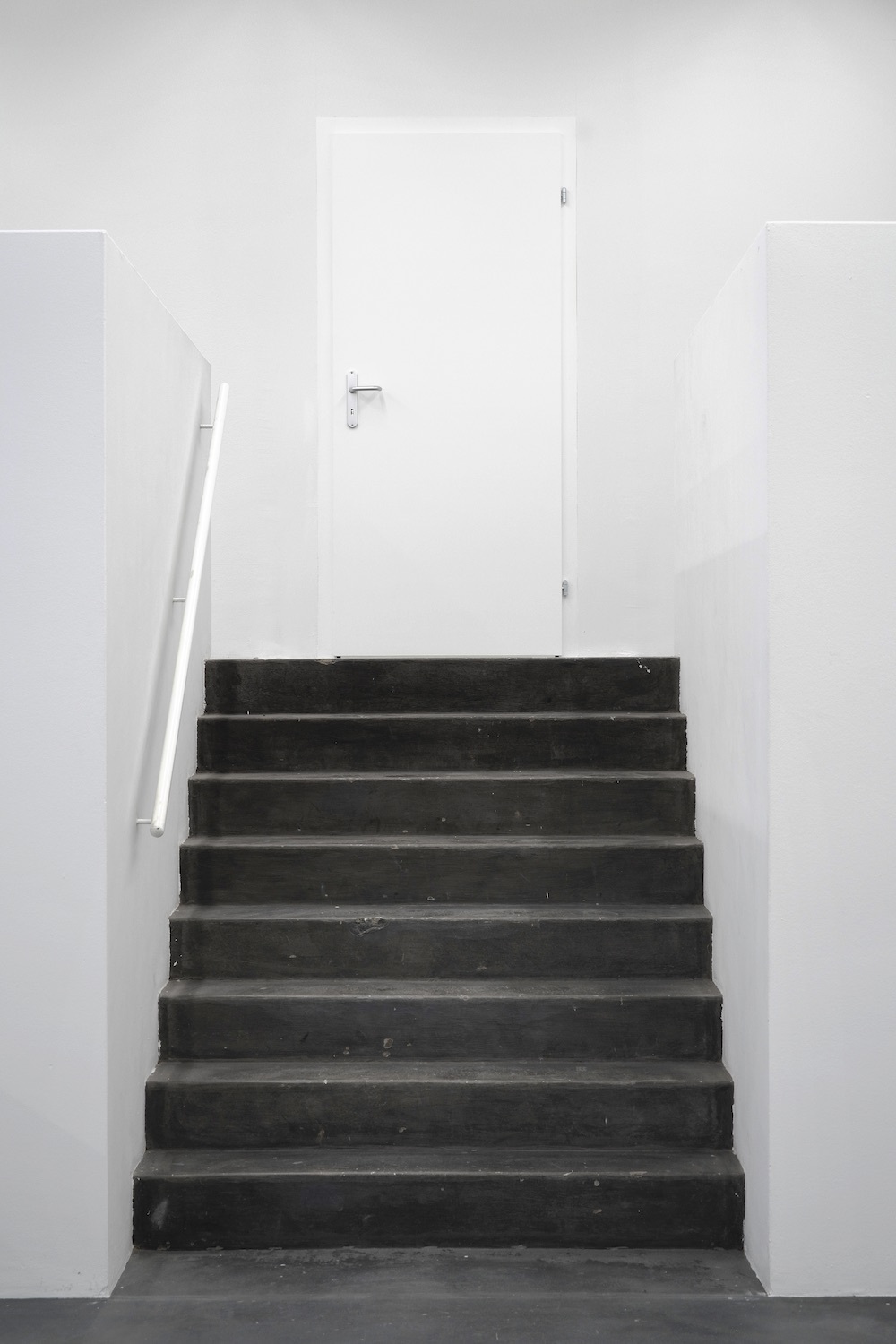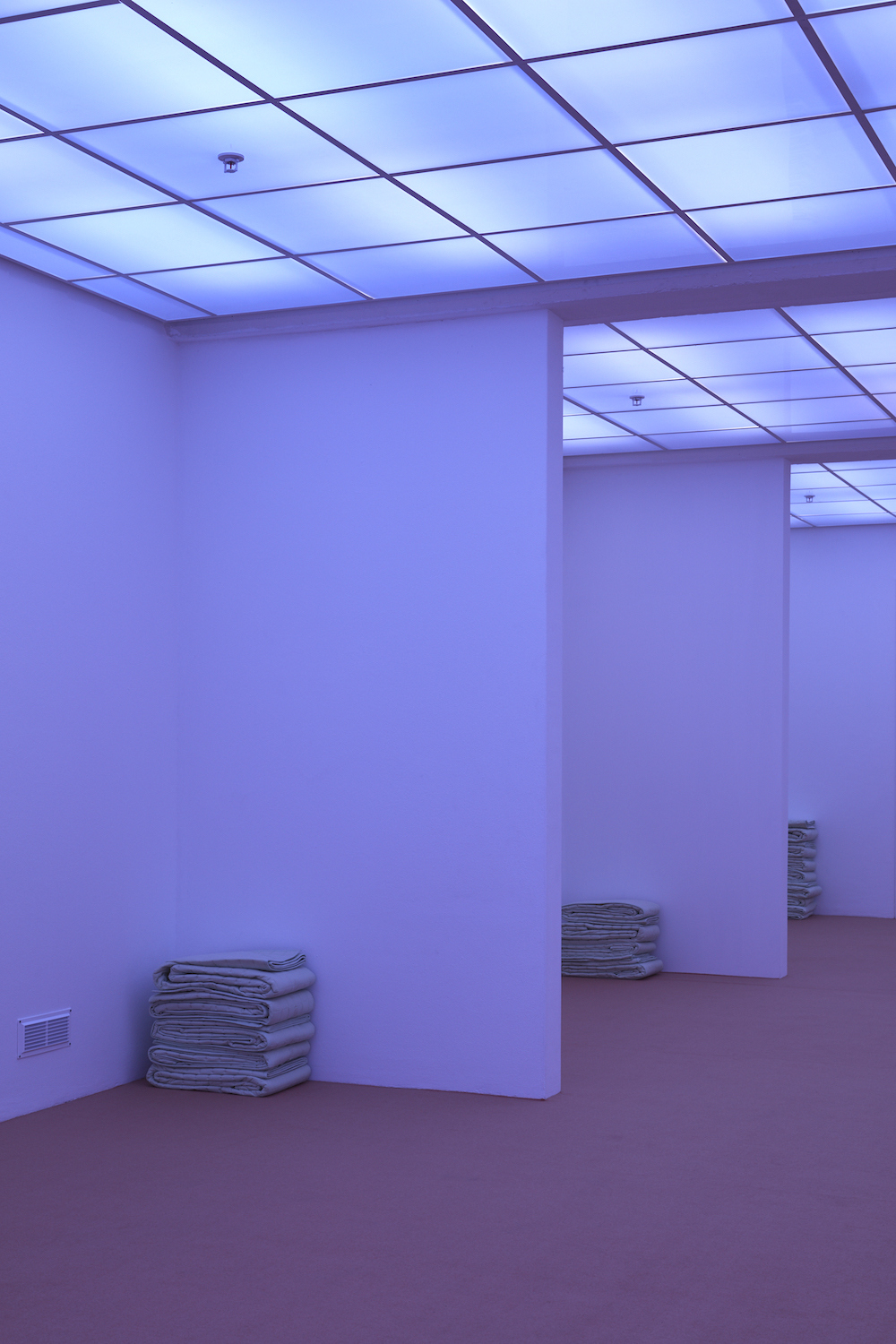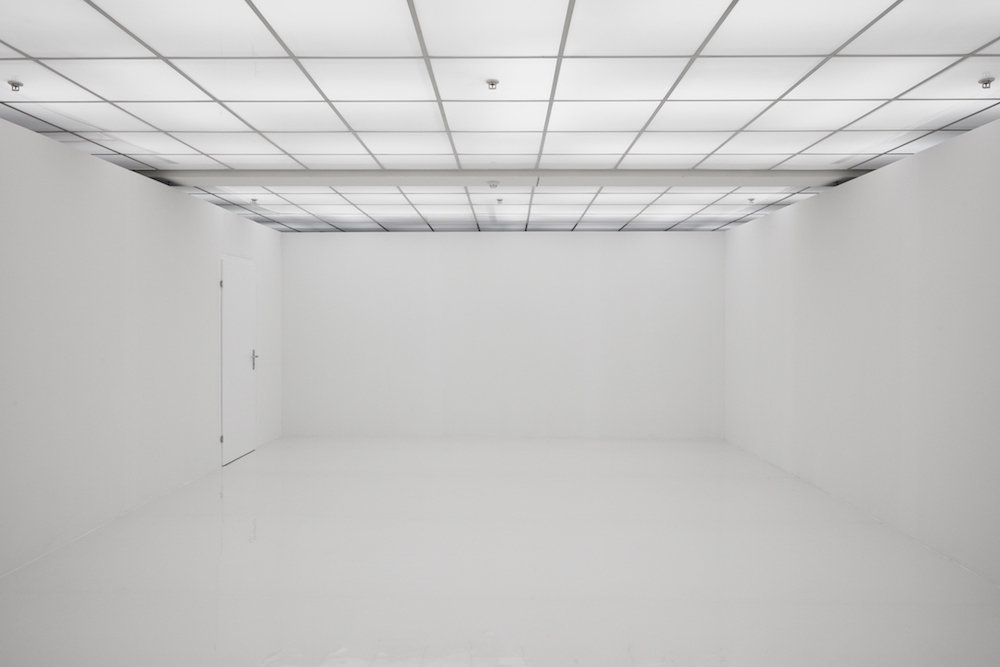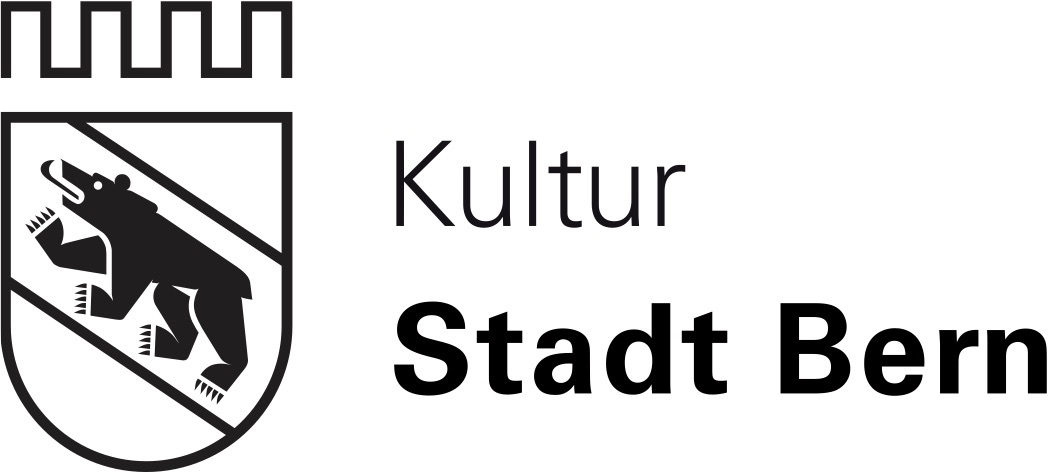Rebecca Kunz
25.1. —
28.4.2019





Selected press coverage
Basler Zeitung, 26. Januar 2019
Basellandschaftliche Zeitung, 11. März 2019
Project partners


Rebecca Kunz (b. 1986, Bern), who lives in Basel and Bern and successfully completed her Masters degree in 2018, has an ongoing interest in manipulation. Rather than leading the viewer into the art object, her radical spatial interventions turn this relationship on its head. The interlocutor is thrown back upon him or herself, to find themselves in a variety of (spatial) situations. For her exhibition at the Kunsthaus Baselland, her first institutional solo show, Kunz plans a parcour though the spaces set aside for her work that transforms what should be familiar into something new.
Rebecca Kunz’s works don’t allow passivity. They demand active appreciation; they demand openness and acceptance — and, ideally, active engagement as a consequence of new experiences. There is no ambling through familiar spaces. Rebecca Kunz’s spaces are inescapable, they irritate, are nearly entirely empty and are radical. Basel, in 2018: for the graduation work for her Masters degree the artist, who was born in Bern, rented a building with several stories on Hardtstrasse. The building was vacant for a short period and Kunz carried out some subtle and some more obvious interventions there. Halls and passages became dead ends. Light conditions were changed. A view outwards, which might allow spatial and particularly temporal orientation, was not possible. ‘Spending several months in the interior I had darkened for my last project, Haus Hardtstrasse 43,’ says the artist, ‘I noticed how the building slowly became part of me. The building and I merged ever more into each other. The atmosphere in the spaces coloured my mood. A space is the starting point of my work. If I spend enough time there — alone, if possible — the space dictates which tracks I should follow, which architectural and spatial details I should concentrate on and which are less important.’
Kunz’s practice thus begins not with a concept, but by engaging with what she finds, with history and specific features that emanate from the given space. In her still emergent work the Basel and Bern-based artist considers not the space, but various possibilities for re-thinking space and place and ways to ultimately experience those anew.
At the Kunsthaus Baselland the Kabinett galleries have been the focus of her artistic research. Each room has two openings. The series of spaces thus accords with a place of passage, one which encourages us to move through. The fundamental intervention which Rebecca Kunz has now carried out alters not only visitors’ movements but equally the time required to pass through the spaces. It equally poses new questions about the space, such as what its possible new function is, which might be transmitted to the viewer. Whereas a space generally possesses inherent qualities such as reliability, shelter, stability, constancy and function, here uncertainty reigns about what might be revealed next and, above all, how it may affect me as a viewer. A clear function can no longer be deciphered. Appreciation of the space demands heightened attention — where are tricks built in, where is the false floor, how do I respond to the colours, the at times glaring lighting, the spatial acoustics or the door that clinks shut behind me? Did the person who went through the space before me have a similar experience? What new function could be accorded to these spaces in an institutional context; what would I do with them?
‘I don’t believe’, Kunz remarks, ‘that spaces affect us entirely differently. Naturally there are people who are more empathetic and sensitive than others. Yet there are certainly general parameters which make a space comfortable or uncomfortable. There is light that rouses us, other light that makes us sleepy. Light that can be a means of combatting depression. Light that tortures us, because it is directed so harshly. The spatial acoustics (sounds, noise level or quiet), the orientation, the smell, temperature and air quality all determine whether we feel at ease or not. What’s more, the quality of floors (soft or hard) and the things we touch (handles or walls) all influence how we feel and appreciate the space. If there are no windows and many rooms in a building we automatically struggle to orient ourselves and feel intrinsically uncomfortable, because we cannot open a window, breathe fresh air or indeed escape. If there is no possibility of looking out, it can be disconcerting. I’m interested in speaking to people about their individual experiences of space. I’m interested in their personal experience. There is no right or wrong in it. I can really relate to that. I like it when people make direct contact with art and maybe even, for a short time, forget that it is art at all.’
Rebecca Kunz’s interventions thus go much further than just changing the existing spatial structures and qualities, emphasising or repurposing them. Her research challenges the effects of spatial givens on social interaction and communication. It is hard to conceive that anyone could walk through these spaces looking at their phone, as has become common practice today, indoors and outside. It requires concentration to move through. At a moment in time during which society retreats ever more into virtual spaces, when physical spaces seem principally there in order to be overcome and when mobility and technology hardly invite us to pause and reflect, we should ask ourselves where we personally can experience and sound out how spaces and their qualities operate on us. How might they influence and manipulate us? For we ourselves can constitute spaces through our activities; we imbue them with social and societal meaning.
Text by Ines Goldbach